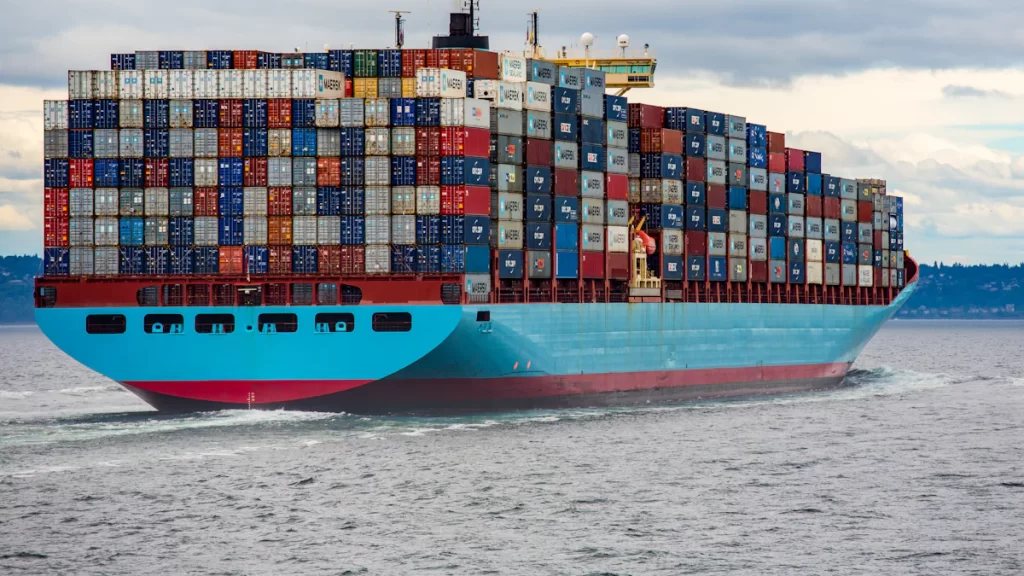- By TOP CHINA FREIGHT
- August 26, 2025
- Shipping
Shipping cost from China to Germany can make or break your profit margins if not well-planned. Imagine securing a high-volume order from a trusted Chinese supplier, only to find your margins shrinking because of unpredictable shipping charges, delays, or hidden fees. This guide will help you understand cost factors, transportation options, and actionable strategies to reduce costs while ensuring smooth delivery to Germany.
1.Factors That Affect Shipping Cost from China to Germany
| Factor | Impact on Cost |
|---|---|
| Mode of transport | Air freight is fastest but costliest; sea freight is cheapest but slower |
| Weight and volume | Heavier and larger cargo costs more to ship |
| Seasonality | Q4 and Chinese New Year often bring surcharges |
| Incoterms | Determines whether the buyer or seller pays specific logistics costs |
| Customs duties and VAT | Influences the total landed cost |
| Route and carrier choice | Efficient routes and reliable carriers reduce delays and extra fees |
2.Transportation Options
Sea Freight

Transit Time:
30–40 days
Best For:
Bulky and heavy goods, non-urgent shipments
Cost Range:
$1,000–$1,800 per 20ft container; $2,000–$3,200 per 40ft container
Sea freight remains the most cost-efficient solution for businesses shipping from China to Germany. LCL (Less than Container Load) services are ideal for small and medium shipments.
Air Freight

Transit Time:
5–8 days
Best For:
High-value or time-sensitive goods
Cost Range:
$5–$8 per kg
Air freight is ideal for electronics, pharmaceuticals, or urgent replenishment but should be planned to avoid seasonal rate hikes.
Rail Freight

Transit Time:
15–20 days
Best For:
Mid-volume goods requiring faster delivery than sea freight but at lower costs than air
Cost Range:
Typically between sea and air freight rates
Rail freight, via the China-Europe Railway Express, offers a balance between cost and speed for businesses shipping to Germany.
3.Customs Duties and Taxes
Customs duties and VAT significantly influence the shipping cost from China to Germany.
| Product Category | Duty Rate (Approx.) |
|---|---|
| Electronics | 3% – 12% |
| Apparel and Textiles | 10% – 20% |
| Industrial Equipment | 2% – 8% |
VAT:
Standard VAT is 19%, calculated on the CIF value plus applicable duties.
Documentation Required:
- Commercial Invoice
- Packing List
- Bill of Lading or Air Waybill
- Certificate of Origin
- Import Licenses (if required)
Pro Tip:
Errors in customs documentation are a leading cause of delays and extra charges. Partnering with an experienced customs broker prevents costly mistakes.
4.Cost-Saving Strategies
Here are actionable ways to manage shipping cost from China to Germany:
1.Consolidate Shipments
Combine smaller shipments into a single container to reduce per-unit costs.
2.Book Early
Especially during peak seasons like Q4 and pre-Chinese New Year.
3.Leverage Multi-Modal Shipping
Combine rail and trucking for cost-effective solutions.
4.Negotiate with Freight Forwarders
Regular shippers often qualify for volume discounts.
5.Choose the Right Incoterms
Terms like FOB or CIF can affect who handles and pays for certain segments of the journey.
5.Hidden Fees to Watch Out For
| Fee Type | Explanation |
|---|---|
| Port Handling Charges | Fees for loading and unloading at ports |
| Customs Inspection Fees | Random checks can lead to unexpected expenses |
| Demurrage and Detention | Costs for containers held at ports beyond free days |
| Documentation Fees | Administrative costs for processing paperwork |
Being proactive with planning and documentation can help you avoid these extra charges.
6.Impact of Seasonality
Peak seasons like November–January and before Chinese New Year cause significant rate spikes. Plan your inventory and shipping schedules to avoid these periods if possible.
7.The Role of Technology
Digital logistics platforms can help businesses control shipping cost from China to Germany by:
- Tracking real-time rates
- Offering predictive analytics for cost planning
- Improving visibility across the supply chain
Using technology reduces human error, helps manage lead times, and keeps your costs transparent.
8.Choosing the Right Freight Forwarder

The expertise of your forwarder can save thousands in hidden fees and delays. Look for:
- Experience with China-Germany routes
- Transparent pricing
- Strong relationships with carriers
- Digital tools for visibility and tracking
9.Example Cost Breakdown
Here’s an approximate example for a 20ft FCL shipment from Shenzhen to Hamburg:
| Cost Component | Estimated Cost |
|---|---|
| Ocean Freight | $1,400 |
| Port Handling | $150 |
| Customs Duties | $300 |
| VAT (19%) | $500 |
| Inland Trucking | $250 |
| Total | $2,600 |
Note: Rates fluctuate depending on season, route, and carrier availability.
Conclusion
Managing shipping cost from China to Germany effectively requires a clear understanding of transportation options, customs regulations, and cost-saving strategies. By leveraging technology, partnering with an experienced freight forwarder, and planning shipments strategically, businesses can reduce costs and maintain reliable supply chains. For tailored solutions and optimized rates, request a personalized quote today and take the guesswork out of your logistics planning.
Need a Shipping Quote?
If you want expert guidance and peace of mind, our team is ready to assist.
TJ China Freight offers tailored solutions to help businesses of all sizes ship more reliably from China.
FAQs
Q1:What is the average shipping cost from China to Germany?
The cost varies by mode:
- Sea freight: Around $1,000–$1,800 for a 20ft container, $2,000–$3,200 for a 40ft container.
- Air freight: Typically $5–$8 per kg.
- Rail freight: Mid-range, usually 20–40% cheaper than air but faster than sea.
Q2:How long does shipping from China to Germany take?
- Sea freight: 30–40 days
- Rail freight: 15–20 days
- Air freight: 5–8 days
The choice depends on your urgency and budget.
Q3:How can I reduce my shipping cost from China to Germany?
- Consolidate smaller shipments into one container
- Book early to avoid peak season surcharges
- Compare quotes from multiple freight forwarders
- Use rail freight for a balance between speed and cost
- Negotiate better rates for regular shipments
Q4:What are the main taxes and duties when importing into Germany?
- Customs duties: Typically 2%–12% depending on product type
- VAT: Standard 19% on the CIF value plus duties
Accurate classification of goods is key to avoiding penalties or delays.
Q5:Which is the cheapest way to ship from China to Germany?
Sea freight is usually the most cost-effective, especially for large or heavy shipments. However, for smaller shipments, LCL (Less than Container Load) can also be budget-friendly.
